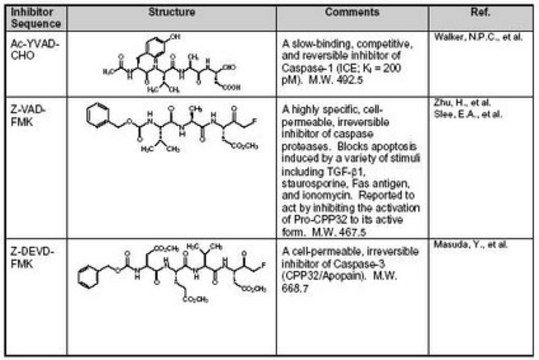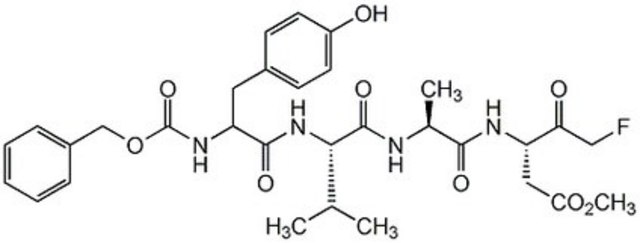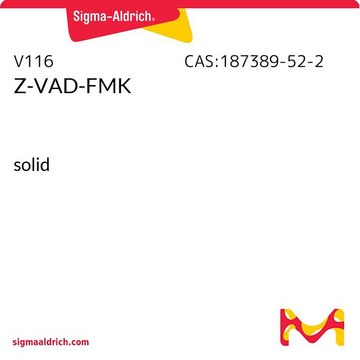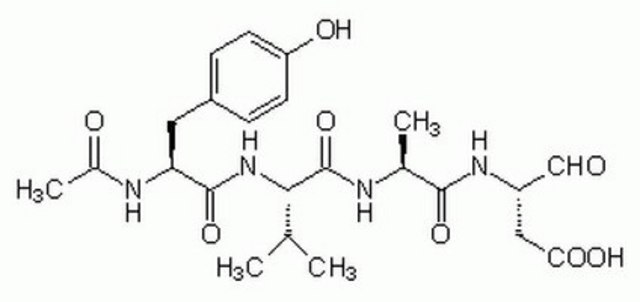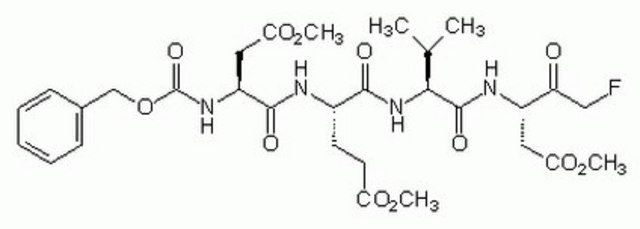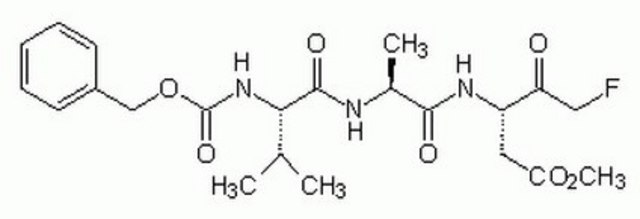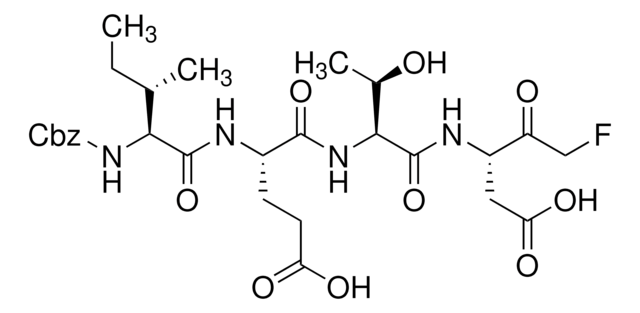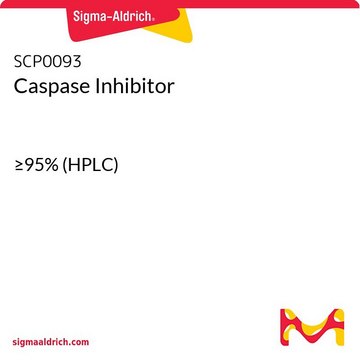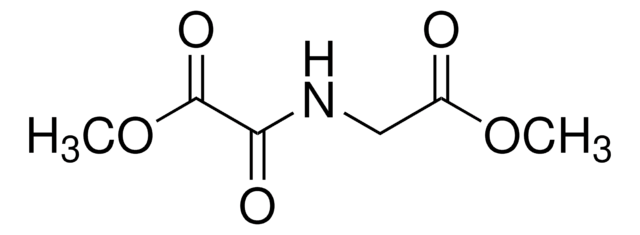218806
Caspase Inhibitor Set III
The Caspase Inhibitor Set III controls the biological activity of Caspase. This collection of small molecule/inhibitor is primarily used for Cancer applications.
Sign Into View Organizational & Contract Pricing
All Photos(1)
About This Item
UNSPSC Code:
12352200
Recommended Products
Quality Level
form
liquid
manufacturer/tradename
Calbiochem®
storage condition
OK to freeze
desiccated
shipped in
wet ice
storage temp.
−20°C
General description
A set of eight ready to use cell-permeable, irreversible inhibitors of various caspase-family proteases. Contains 25 µl (2 mM) each of Caspase-1 Inhibitor VI, Z-YVAD-FMK (Cat. No. 218746); Caspase-2 Inhibitor I, Z-VDVAD-FMK (Cat. No. 218744); Caspase-3 Inhibitor II, Z-DEVD-FMK (Cat. No. 264155); Caspase-5 Inhibitor I, Z-WEHD-FMK (Cat. No. 218753); Caspase-6 Inhibitor I, Z-VEID-FMK (Cat. No. 218757); Caspase-8 Inhibitor II, Z-IETD-FMK (Cat. No. 218759); Caspase-9 Inhibitor I, Z-LEHD-FMK (Cat. No. 218761); and Caspase Inhibitor I, Z-VAD-FMK (Cat. No. 627610). Supplied with a data sheet.
Apoptosis is a normal process in development and morphogenesis. Many cells can be activated to undergo apoptosis following the interaction of selected ligands with cell surface receptors. Receptor-mediated apoptosis involves the activation of caspases (cysteine-containing aspartate-specific proteases). A distinctive feature of caspases is the requirement of an aspartic acid residue in the substrate P1 position.
Caspase inhibitors act by binding to the active site of caspases and form either a reversible or an irreversible linkage. Caspase inhibitor design includes a peptide recognition sequence attached to a functional group such as an aldehyde (CHO), chloromethylketone (CMK), fluoromethylketone (FMK), or fluoroacyloxymethylketone (FAOM). Caspase inhibitors with a CHO group are reversible and those with a CMK, FMK, or FAOM group are irreversible and cell-permeable. FMK exhibits slightly less reactivity than CMK and therefore is more specific for the enzyme being inhibited.
Caspase inhibitors act by binding to the active site of caspases and form either a reversible or an irreversible linkage. Caspase inhibitor design includes a peptide recognition sequence attached to a functional group such as an aldehyde (CHO), chloromethylketone (CMK), fluoromethylketone (FMK), or fluoroacyloxymethylketone (FAOM). Caspase inhibitors with a CHO group are reversible and those with a CMK, FMK, or FAOM group are irreversible and cell-permeable. FMK exhibits slightly less reactivity than CMK and therefore is more specific for the enzyme being inhibited.
Biochem/physiol Actions
Cell permeable: yes
Primary Target
Caspase-1, caspase-2, caspase-3, caspase-4, caspase-5, caspase-6, caspase-7, caspase-8
Caspase-1, caspase-2, caspase-3, caspase-4, caspase-5, caspase-6, caspase-7, caspase-8
Reversible: no
Warning
Toxicity: Irritant (B)
Physical form
Supplied as 2 mM in DMSO.
Other Notes
Humke, E.W., et al. 1998. J. Biol. Chem.273, 15702.
Datta, R., et al. 1997. J. Biol. Chem. 272, 1965.
Martin, L.M., et al. 1997. J. Biol. Chem. 272, 7421.
Takahashi, A., et al. 1997. Exp. Cell Res.231, 123.
Talanian, R.V., et al. 1997. J. Biol. Chem. 272, 9677.
Thornberry, N.A., et al. 1997. J. Biol. Chem. 272, 17907.
Nicholson, D.W., et al. 1995. Nature376, 37.
Thornberry, N.A., et al. 1992. Nature356, 768.
Datta, R., et al. 1997. J. Biol. Chem. 272, 1965.
Martin, L.M., et al. 1997. J. Biol. Chem. 272, 7421.
Takahashi, A., et al. 1997. Exp. Cell Res.231, 123.
Talanian, R.V., et al. 1997. J. Biol. Chem. 272, 9677.
Thornberry, N.A., et al. 1997. J. Biol. Chem. 272, 17907.
Nicholson, D.W., et al. 1995. Nature376, 37.
Thornberry, N.A., et al. 1992. Nature356, 768.
Legal Information
CALBIOCHEM is a registered trademark of Merck KGaA, Darmstadt, Germany
Storage Class Code
10 - Combustible liquids
Certificates of Analysis (COA)
Search for Certificates of Analysis (COA) by entering the products Lot/Batch Number. Lot and Batch Numbers can be found on a product’s label following the words ‘Lot’ or ‘Batch’.
Already Own This Product?
Find documentation for the products that you have recently purchased in the Document Library.
Our team of scientists has experience in all areas of research including Life Science, Material Science, Chemical Synthesis, Chromatography, Analytical and many others.
Contact Technical Service